

Kafunsho and You: Hay Fever in Japan
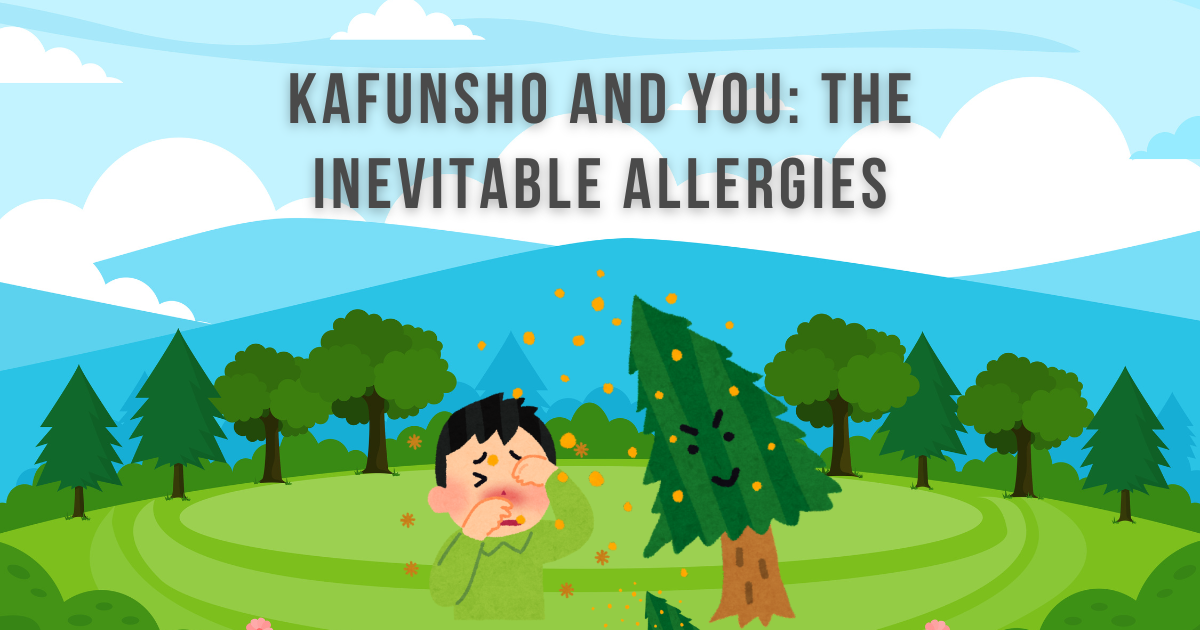
Spring in Japan is a beautiful time of year. Cherry blossoms bloom, parks are filled with vibrant color, and the air is filled with…horrible amounts of pollen?!
If you’re a foreigner living or visiting Japan during spring, understanding and managing hay fever or “Kafunsho” in Japanese, can make your life a lot easier. Let’s delve into what hay fever is, why it’s such a problem in Japan, and how you can cope.
What is Hay Fever?
Hay fever is an allergic reaction to pollen, typically from trees, grasses, and weeds. Symptoms include sneezing, runny or stuffy nose, itchy eyes, throat irritation, and fatigue. While hay fever can strike at any time depending on pollen count, its during spring when trees, especially cedar trees, bloom when it is most likely.
Why is Hay Fever Prevalent in Japan?
Japan’s climate and large amount of post-war tree imports make it the sneeze capital of the world for allergy sufferers. Cedar and cypress trees are notorious for causing hay fever. These trees were planted extensively after World War II for timber production and to control soil erosion. As a result, vast cedar and cypress forests now cover much of the country, adding greatly to the pollen count.
Hay Fever Medicine Japan
Over-the-counter allergy medicines such as Allegra and nasal sprays can provide relief from hay fever symptoms. If your symptoms are severe, consult a doctor for prescription medications or immunotherapy options. Here a few common OTC medicines:
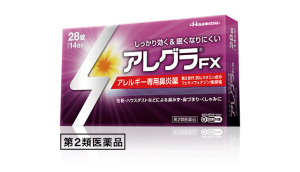
1. Allegra (アレグラ):
The one and only! Allegra is a non-drowsy antihistamine that can be taken once a day. It can relieve nasal congestion, runny nose, sneezing and itchy eyes, weaker in Japan than back home, however.
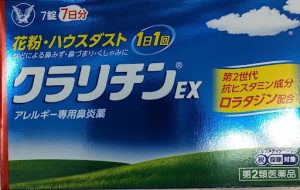
2. Claritin (クラリチン):
“We have Claritin-D at home”, this is another non-drowsy antihistamine that can be taken once a day but without the pseudoephedrine decongestant that you are probably used to in Claritin in the West that makes it so effective for allergy sufferers.
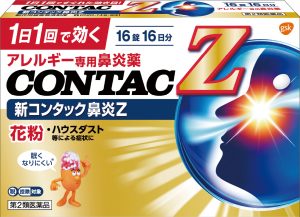
3. Contac Z: Japanese Zyrtec.
This is a slightly drowsy antihistamine that can be taken once or twice a day. It can also reduce nasal congestion, runny nose, sneezing and itchy eyes.
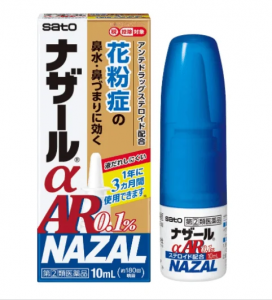
4. NAZAL α AR 0.1% (ナザールαAR0.1%):
This is a Japanese nasal spray antihistamine that can also relieve nasal congestion, runny nose and sneezing.
More Strategies for Dealing with Hay Fever
1. Stay Informed:
Keep track of pollen forecasts, which are often reported in weather forecasts during spring. Websites and smartphone apps provide real-time pollen information, helping you plan your outdoor activities accordingly. The Japan Weather Association keeps a good tracker here!
2. Protective Measures:
When pollen levels are high, consider wearing a mask to reduce your exposure to allergens. Protective sunglasses can also help prevent pollen from entering your eyes.
3. Indoor Retreats:
On days when pollen counts are exceptionally high, consider indoor activities such as visiting museums, shopping malls, or just relaxing at home.
4. Natural Remedies:
Some people find relief from hay fever symptoms through natural remedies such as nasal rinses, herbal teas, and local honey brews. While these methods may not work for you, they are worth exploring as complementary treatments.
5. Allergy-proof Your Home:
Keep windows closed during peak pollen times and use air purifiers to reduce indoor allergens. Regularly vacuuming and dusting can also help with pollen indoors. Remember to clean your AC unit too!
Cultural Considerations
Navigating hay fever season in Japan also involves understanding some cultural norms. While frequent nose blowing and sneezing is unavoidable with allergies, try doing so discreetly and with consideration for others. Wearing a mask and carrying tissues or handkerchiefs to contain sneezes and sniffles is a good practice.
Hay fever can be a challenging experience for foreigners in Japan in spring. However, with proper preparation, you can minimize its impact and continue to enjoy all that Japan has to offer during this beautiful season. By staying informed, taking protective measures, and exploring various coping strategies, you can navigate kafunsho with ease.






